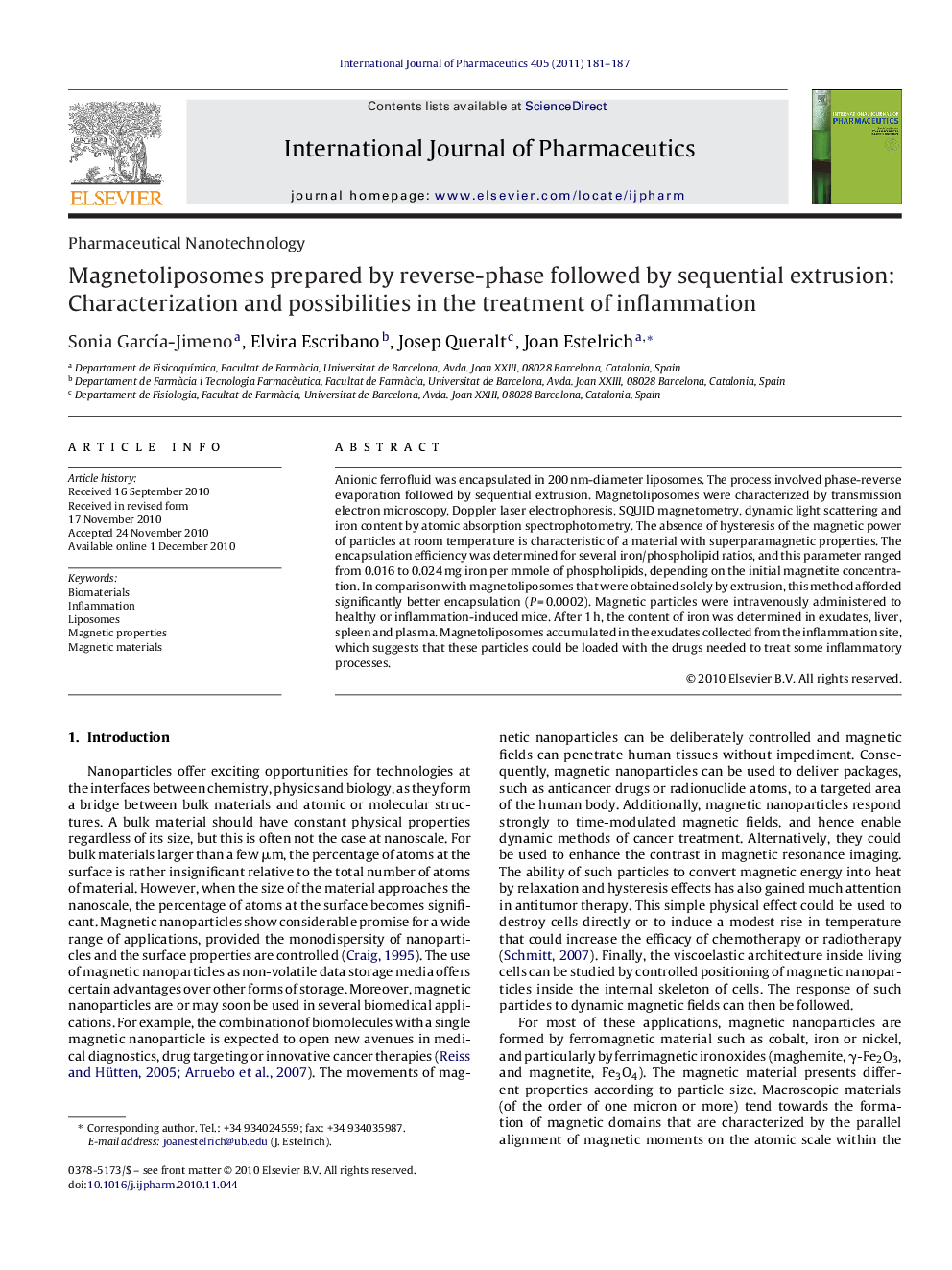| Article ID | Journal | Published Year | Pages | File Type |
|---|---|---|---|---|
| 2503652 | International Journal of Pharmaceutics | 2011 | 7 Pages |
Anionic ferrofluid was encapsulated in 200 nm-diameter liposomes. The process involved phase-reverse evaporation followed by sequential extrusion. Magnetoliposomes were characterized by transmission electron microscopy, Doppler laser electrophoresis, SQUID magnetometry, dynamic light scattering and iron content by atomic absorption spectrophotometry. The absence of hysteresis of the magnetic power of particles at room temperature is characteristic of a material with superparamagnetic properties. The encapsulation efficiency was determined for several iron/phospholipid ratios, and this parameter ranged from 0.016 to 0.024 mg iron per mmole of phospholipids, depending on the initial magnetite concentration. In comparison with magnetoliposomes that were obtained solely by extrusion, this method afforded significantly better encapsulation (P = 0.0002). Magnetic particles were intravenously administered to healthy or inflammation-induced mice. After 1 h, the content of iron was determined in exudates, liver, spleen and plasma. Magnetoliposomes accumulated in the exudates collected from the inflammation site, which suggests that these particles could be loaded with the drugs needed to treat some inflammatory processes.
Graphical abstractFigure optionsDownload full-size imageDownload as PowerPoint slide
